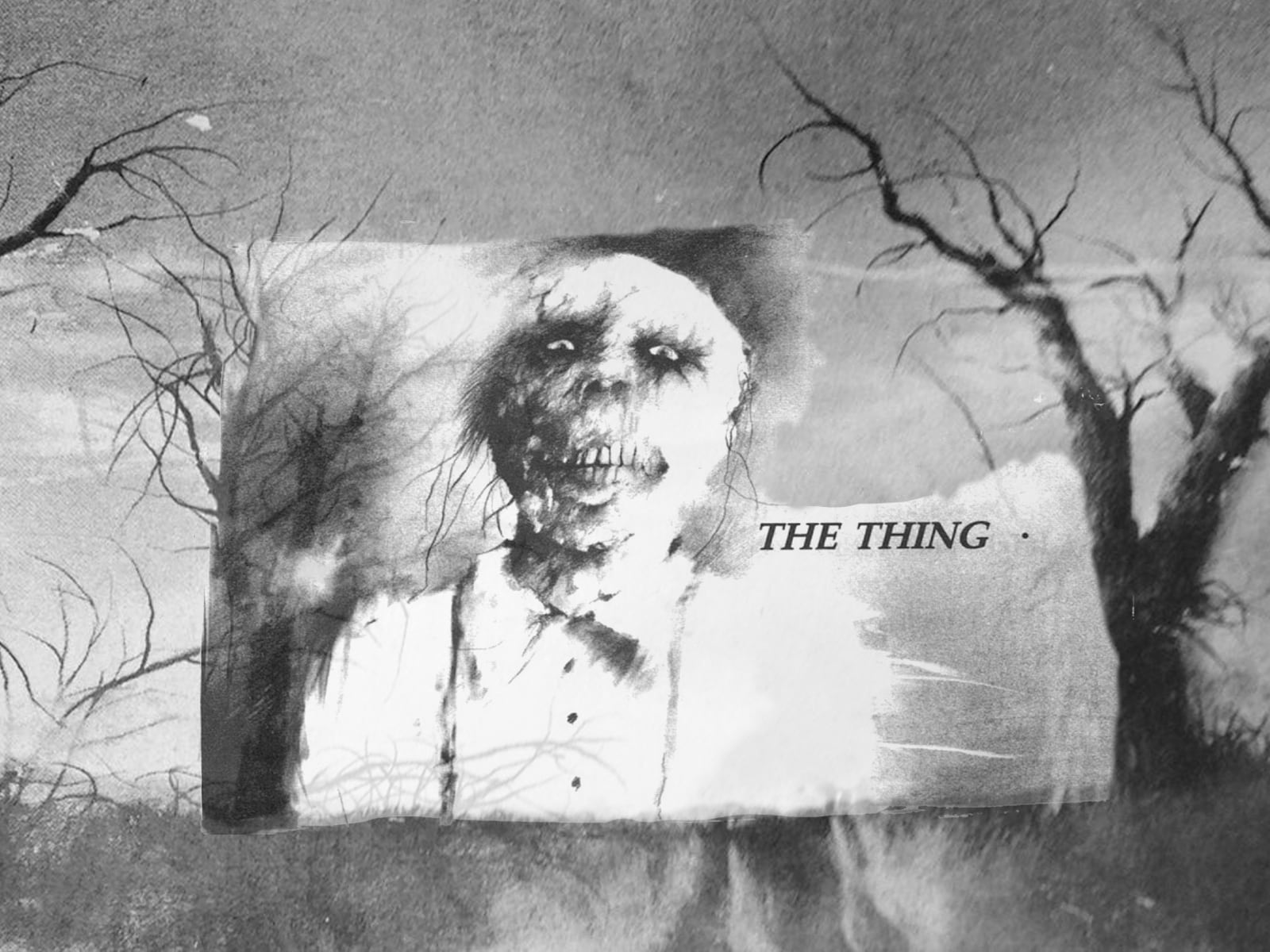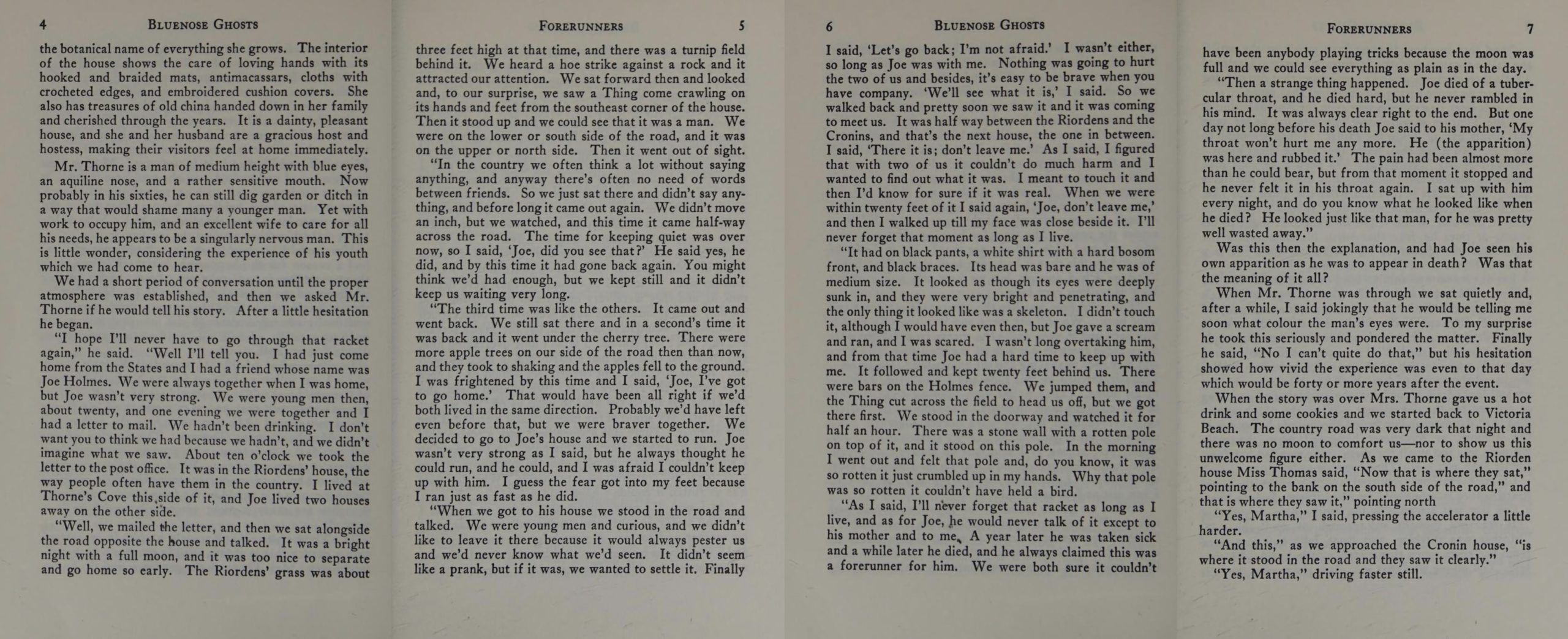I made a documentary about Scary Stories to Tell in the Dark. (Now available to watch.) The three books consisted of over 80 stories of folklore and urban legends. It was impossible to appropriately address each and every story in a single documentary. This website, in part, is a chance to look at individual stories that I researched, tales in which I learned about their origins and social contexts. It’s a chance to examine stories that I ultimately found to be fascinating in some way or another.
This is The Thing.
Stories of seeing a sign of impending doom is a common trope in folktales and urban legends. One of the first stories in Alvin Schwartz’s Scary Stories to Tell in the Dark uses that trope to great effect. In fact, for many children it was the first example of such a story that they ever heard. It is short and impactful, like many such tales. I’m talking about The Thing, Scary Stories to Tell in the Dark‘s often most heralded stories, but also one of its simplest.
It is important to not only look at that version of the story as one that had a large impact on many of certain generations, but also look at where the urban legend comes from and variations that have come since.
The Full Story of The Thing
Alvin Schwartz included The Thing in the first book of his series. The illustration by Stephen Gammell is one that many credit as one of his most haunting.
Here is the version that can be found in Scary Stories to Tell in the Dark, The Thing.
Ted Martin and Sam Miller were good friends. They spent a lot of time together. On this particular night, they were sitting on a fence near the post office talking about one thing and another.
There was a field of turnips across the road. Surprisingly, they saw something crawl out of the field and stand up. It looked like a man, but in the dark, it was hard to tell for sure. As quickly as it had appeared, it was gone.
But soon it appeared again. It walked halfway across the road, then turned around and returned to the field.
Then it came for a third time and started toward them. By now, Ted and Sam were scared and they started running. But when they finally stopped, they decided they were being silly and childish. They weren’t so sure what had scared them. So they decided to go back and get a better look.
Pretty soon, they saw it, for it was coming to meet them. It was wearing black pants, a white shirt, and black suspenders.
Sam said, “I’m going to try to touch it. Then we’ll know if it’s real.”
He courageously walked up to it and peered into its face. It had bright, penetrating eyes that sunk deep into its head. It looked almost like a skeleton.
Ted took one look and screamed, and again he and Sam ran, but the corpse-like figure followed them. When they got to Ted’s house, they stood in the doorway and watched it, appalled. It stayed out in the road for a while, seeming to watch them in return, but once more, it vanished.
No more than a year later, Ted grew horribly ill and the sickness killed him. Toward the end, Sam sat up with him every night. The night Ted died, he looked just like the frightening thing that they had encountered a year before.
Origin of Scary Stories to Tell in the Dark‘s The Thing
Alvin Schwartz in Scary Stories to Tell in the Dark‘s “The Thing” credits Helen Creighton’s Bluenose Ghosts as the main origin of his version of the story.
It is in a chapter that is dedicated to a large collection of folktales referred to as stories of a Forerunner. What is a forerunner? As it is stated in Helen Creighton’s book, forerunners are “supernatural warnings of approaching events and are usually connected with impending doom.” Many stories from Scary Stories to Tell in the Dark fit this mold, while many others exist in other legends and popular culture. Only a few include the Mothman Prophecy, the Smiling Man, and the Pale Lady.
Here is what Alvin Schwartz would have read in the book that resulted in his adaptation of Scary Stories to Tell in the Dark‘s “The Thing”.
And here is the text of the full story included in Bluenose Ghosts.
“Well I’ll tell you. I had just come home from the States and I had a friend whose name was Joe Holmes. We were always together when I was home, but Joe wasn’t very strong. We were young men then, about twenty, and one evening we were together and I had a letter to mail. We hadn’t been drinking. I don’t want you to think we had because we hadn’t, and we didn’t imagine what we saw. About ten o’clock we took the letter to the post office. It was in the Riordens’ house, the way people often have them in the country. I lived at Thorne’s Cove this side of it, and Joe lived two houses away on the other side.
“Well, we mailed the letter, and then we sat alongside the road opposite the house and talked. It was a bright night with a full moon, and it was too nice to separate and go home so early. The Riordens’ grass was about three feet high at that time, and there was a turnip field behind it. We heard a hoe strike against a rock and it attracted our attention. We sat forward then and looked and, to our surprise, we saw a Thing come crawling on its hands and feet from the southeast corner of the house. Then it stood up and we could see that it was a man. We were on the lower or south side of the road, and it was on the upper or north side. Then it went out of sight.
As I dive into when discussing “The Dream” and its Pale Lady, stories of forerunners, seeing something that represents ones own death, has a long history and is deeply rooted in our fears of death. When we see an old person walking down the street, close to death, inherently we may have a flash of our own future and what is to come. That is at the root of Scary Stories to Tell in the Dark‘s “The Thing”.
From the Nova Scotia archives, here is Bluenose Ghosts adapted into a collection of stories circa 1975. I jump to the section where they specifically talk of forerunners. In this version, forerunners are talked of as merely sounds, not a vision or a passerby like is the case in Scary Stories to Tell in the Dark‘s “The Thing”. But if you read Bluenose Ghosts, you’ll find that there are different types of these harbingers of death in different stories told in different cultures and lands.
— FOUNDATIONS OF HORROR —
Further explore these subgenres & tropes. more>>
#Scary Stories to Tell in the Dark | #Harbinger of Death

In times when diseases were more prevalent and were often seen when just walking down the street, seeing those who were close to death due to malaria, cholera, or other outbreaks meant confronting death all the time. It only takes an instance of seeing someone who looks vaguely like yourself, and suddenly the notion that you’ve encountered your own future death becomes not far fetched.
Scary Stories to Tell in the Dark‘s “The Thing” becomes a story that becomes common among those living in the early 20th Century when this particular version began to take hold. While we’ve been talking about COVID so much in recent years, 100 years ago the flu pandemic killed 20-50 million people. That was a lot of death being confronted, every day.
Last Updated on January 28, 2023.


